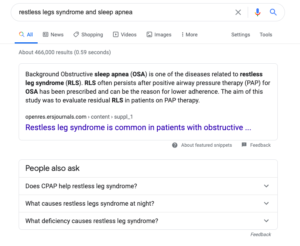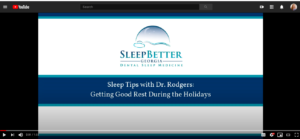 Many healthcare organizations, more than ever before, realize and embrace the importance of transparent, informative, and compassionate patient communication. In a year like 2020, the role of healthcare professionals across disciplines was simultaneously elevated and shrouded with uncertainty—while maintaining whole-body health became more important than ever before, patients were also left with a list of questions, concerned with how providers would continue to offer services while keeping appointments as safe as possible.
Many healthcare organizations, more than ever before, realize and embrace the importance of transparent, informative, and compassionate patient communication. In a year like 2020, the role of healthcare professionals across disciplines was simultaneously elevated and shrouded with uncertainty—while maintaining whole-body health became more important than ever before, patients were also left with a list of questions, concerned with how providers would continue to offer services while keeping appointments as safe as possible.
The need for timely and thorough communication with current patients increased, and in tandem, so did the significant need to get in front of potential new patients. Many healthcare providers were faced with the reality of less patients coming in for treatment this year, meaning less business and fewer word-of-mouth referrals. New patients, generated through marketing efforts, were crucial, and will continue to be so in 2021.
No matter how your healthcare organization invested in marketing in 2020, 2021 opens a wide new door of opportunity. Taking the time to plan a relevant and smart marketing strategy now will poise your healthcare organization for success—more patients coming in the door and individuals benefiting from your services.
Inbound and Outbound Marketing
When many healthcare providers think about marketing, their mind immediately goes to what we in the biz call outbound marketing: any type of marketing where the business or organization initiates the conversation, hoping to reach people interested in their offering. Outbound marketing includes tactics such as radio and print advertising, billboards and road signage, direct mail pieces, and tradeshows or health expos. Outbound marketing operates by “interrupting” a potential patient or customer’s day-to-day with an advertising message. While these strategies aren’t bad, by any means,when your marketing strategy stops there, it won’t be as effective as it could be.
 The most effective strategies also include inbound marketing: putting out great content, such as blogs and social media posts, with the goal of forging a relationship with the target audience. It creates a space for you to build trust with your prospect or customer through content that showcases your expertise. Once that trust is established and if your product or service fulfills their want or need, you will have earned their business and, likely, their loyalty.
The most effective strategies also include inbound marketing: putting out great content, such as blogs and social media posts, with the goal of forging a relationship with the target audience. It creates a space for you to build trust with your prospect or customer through content that showcases your expertise. Once that trust is established and if your product or service fulfills their want or need, you will have earned their business and, likely, their loyalty.
In today’s world, where information is available at a customer’s fingertips, up to 81% of people do research online before making a purchase. The more helpful and relevant content you provide, the more likely prospects will be to do their own research, decide if you’re right for them, and schedule an appointment.
A Mixed Approach: Finding the Sweet Spot
As mentioned above, inbound and outbound marketing work best when paired together. Using outbound tactics, only, will generally result in lower ROI—you’re “paying to play,” with the goal of getting your message in front of as many people as possible. On the other hand, inbound marketing generally has higher ROI, because you’re sharing content on your own platforms, creating opportunities for the customer to come to you, and developing a relationship that will endure and possibly even pay dividends in the form of word-of-mouth referrals. The beauty of combining the two approaches is this: outbound marketing will do its job in reaching a high number of people, while inbound marketing will build a trusted relationship with your organization, ultimately sealing the deal.
Practical Examples: of Combining Inbound and Outbound Marketing
One mixed strategy could be to create a general marketing message that is distributed to people in your area through radio. Include in your ad an invitation to learn more about your services on your organization’s website. When people visit the website, they find a resource of blogs related to their concern and website pages that emphasize the importance of treatment. Additionally, on your website, you’ve included social media links. Your prospect clicks one and is led to a YouTube or Instagram channel with videos featuring the practice doctors and staff, patient testimonials, success stories, and more. While the prospect initially heard of your organization through outbound marketing, they will ultimately feel more connected to your brand through the addition of inbound marketing and will be more likely to convert.
 At Bloom Communications, we regularly utilize a strategic mix of inbound and outbound marketing for our healthcare clients. For Sleep Better Georgia, a provider of oral appliances for the treatment of obstructive sleep apnea located in Dunwoody, Georgia, we reach patients locally through targeted Google search ads and radio advertisements (outbound marketing). We also create two blogs each month, which also get posted on social media, focused on topics related to sleep apnea as well as general sleep health, so potential patients have plenty of information once they reach the Sleep Better Georgia website (all inbound marketing). Patients who go to Sleep Better Georgia’s social media channels can also find a variety of videos featuring the practice doctor, Dr. Jeff Rodgers, as well as videos that take a deep dive into common sleep apnea symptoms, comorbidities, and more (see video below). In Bloom’s first year of supporting Sleep Better Georgia and utilizing a combination of inbound and outbound marketing strategies, the practice experienced a 22% increase in total patient inquiries.
At Bloom Communications, we regularly utilize a strategic mix of inbound and outbound marketing for our healthcare clients. For Sleep Better Georgia, a provider of oral appliances for the treatment of obstructive sleep apnea located in Dunwoody, Georgia, we reach patients locally through targeted Google search ads and radio advertisements (outbound marketing). We also create two blogs each month, which also get posted on social media, focused on topics related to sleep apnea as well as general sleep health, so potential patients have plenty of information once they reach the Sleep Better Georgia website (all inbound marketing). Patients who go to Sleep Better Georgia’s social media channels can also find a variety of videos featuring the practice doctor, Dr. Jeff Rodgers, as well as videos that take a deep dive into common sleep apnea symptoms, comorbidities, and more (see video below). In Bloom’s first year of supporting Sleep Better Georgia and utilizing a combination of inbound and outbound marketing strategies, the practice experienced a 22% increase in total patient inquiries.
In Conclusion
Healthcare professionals and organizations have a prime opportunity in 2021 to create a strategic mix of both inbound and outbound marketing tactics. As in 2020, 2021 will be a year where information is not only helpful, but needed. Healthcare providers that take the time to inform potential patients about prevention, symptoms, and treatment options through blogs, videos, social media content, and more will build trusted relationships that last. Combine this inbound approach with tried-and-true outbound strategies, and your practice or organization will be poised for success.
If you are a healthcare provider looking for assistance with integrating inbound and outbound marketing strategies, or simply desire support to meet your business objectives through marketing, contact us today.
